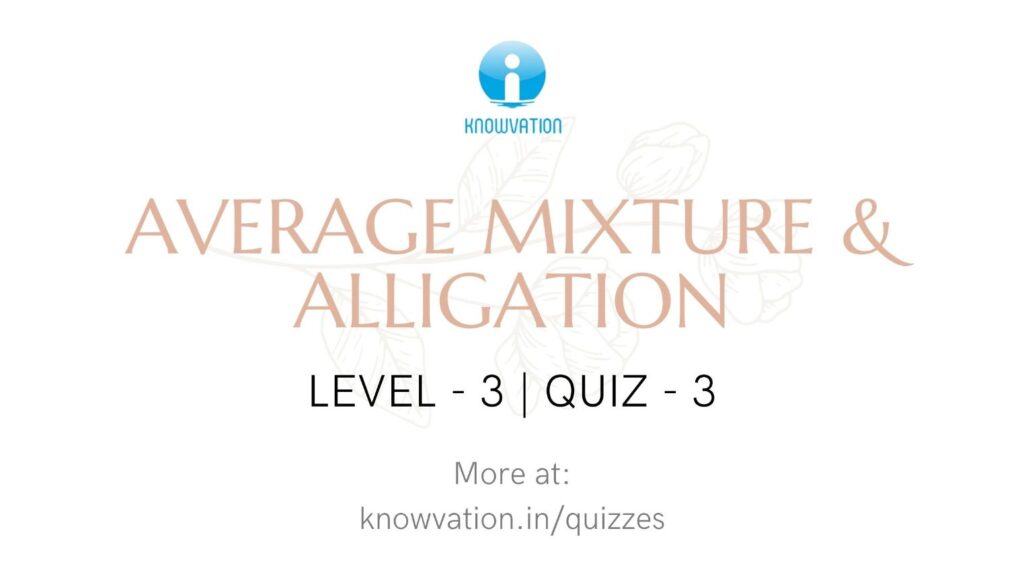Welcome to the Level – 3 Quiz – 3 of the topic Average Mixture & Alligation on Knowvation! The pattern of the quiz will be MCQ and you will encounter many challenging problems which are going to be very helpful for the preparation of various competitive exams like, CAT, IIFT, SNAP, XAT, TISSMAT, TISSNET, CMAT, SSC CGL, etc. You’re requested to please do read the instructions given below before starting this quiz.
Here are some basic instructions:
Time Limit: 20 minutes
Number of Multiple Choice Questions: 10
Passing marks: 70%
You’ll see the answers after you SUBMIT the quiz. ‘Green’ color ticks represents a correct answer and the ‘Red’ ticks represents a wrong answer
Please do provide your valuable feedback on the quiz or report any issue/mistake in the comment box below. ALL THE BEST! 😀



